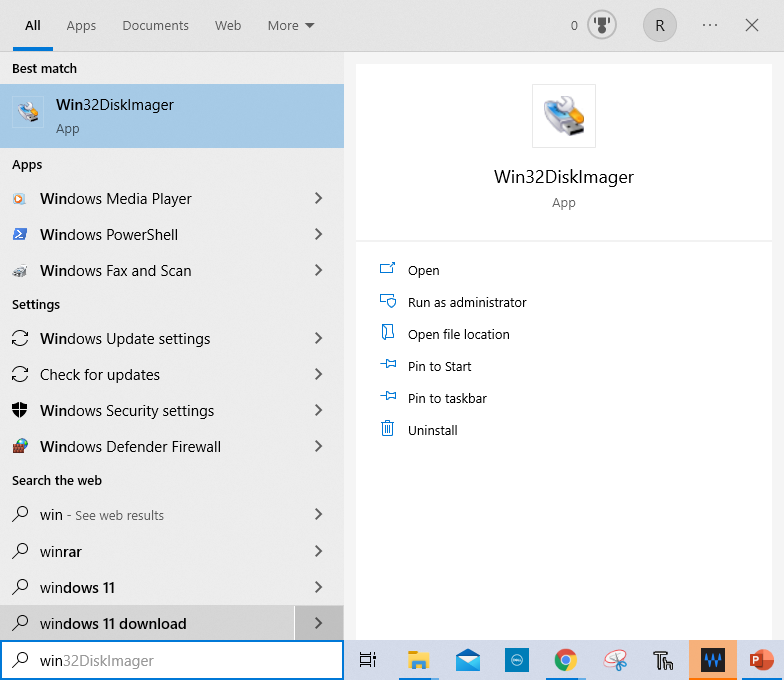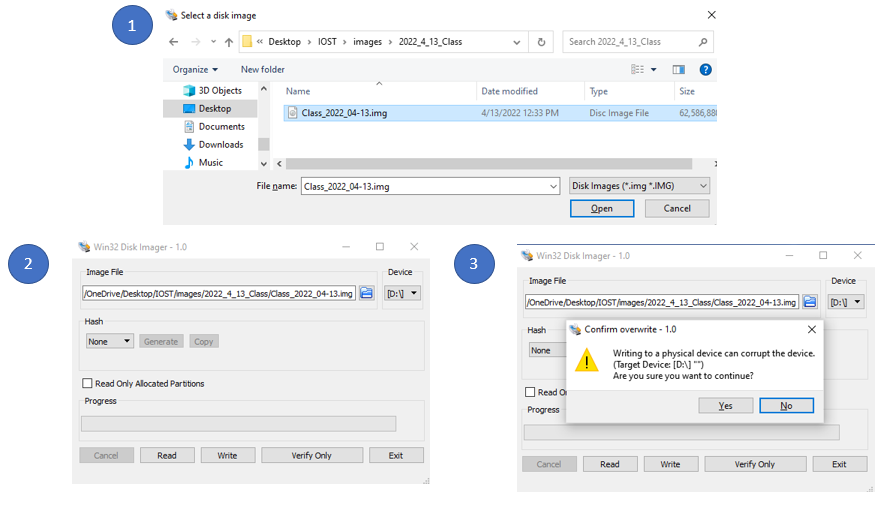1: Setting up your Computer
- Page ID
- 431609
\( \newcommand{\vecs}[1]{\overset { \scriptstyle \rightharpoonup} {\mathbf{#1}} } \)
\( \newcommand{\vecd}[1]{\overset{-\!-\!\rightharpoonup}{\vphantom{a}\smash {#1}}} \)
\( \newcommand{\id}{\mathrm{id}}\) \( \newcommand{\Span}{\mathrm{span}}\)
( \newcommand{\kernel}{\mathrm{null}\,}\) \( \newcommand{\range}{\mathrm{range}\,}\)
\( \newcommand{\RealPart}{\mathrm{Re}}\) \( \newcommand{\ImaginaryPart}{\mathrm{Im}}\)
\( \newcommand{\Argument}{\mathrm{Arg}}\) \( \newcommand{\norm}[1]{\| #1 \|}\)
\( \newcommand{\inner}[2]{\langle #1, #2 \rangle}\)
\( \newcommand{\Span}{\mathrm{span}}\)
\( \newcommand{\id}{\mathrm{id}}\)
\( \newcommand{\Span}{\mathrm{span}}\)
\( \newcommand{\kernel}{\mathrm{null}\,}\)
\( \newcommand{\range}{\mathrm{range}\,}\)
\( \newcommand{\RealPart}{\mathrm{Re}}\)
\( \newcommand{\ImaginaryPart}{\mathrm{Im}}\)
\( \newcommand{\Argument}{\mathrm{Arg}}\)
\( \newcommand{\norm}[1]{\| #1 \|}\)
\( \newcommand{\inner}[2]{\langle #1, #2 \rangle}\)
\( \newcommand{\Span}{\mathrm{span}}\) \( \newcommand{\AA}{\unicode[.8,0]{x212B}}\)
\( \newcommand{\vectorA}[1]{\vec{#1}} % arrow\)
\( \newcommand{\vectorAt}[1]{\vec{\text{#1}}} % arrow\)
\( \newcommand{\vectorB}[1]{\overset { \scriptstyle \rightharpoonup} {\mathbf{#1}} } \)
\( \newcommand{\vectorC}[1]{\textbf{#1}} \)
\( \newcommand{\vectorD}[1]{\overrightarrow{#1}} \)
\( \newcommand{\vectorDt}[1]{\overrightarrow{\text{#1}}} \)
\( \newcommand{\vectE}[1]{\overset{-\!-\!\rightharpoonup}{\vphantom{a}\smash{\mathbf {#1}}}} \)
\( \newcommand{\vecs}[1]{\overset { \scriptstyle \rightharpoonup} {\mathbf{#1}} } \)
\( \newcommand{\vecd}[1]{\overset{-\!-\!\rightharpoonup}{\vphantom{a}\smash {#1}}} \)
\(\newcommand{\avec}{\mathbf a}\) \(\newcommand{\bvec}{\mathbf b}\) \(\newcommand{\cvec}{\mathbf c}\) \(\newcommand{\dvec}{\mathbf d}\) \(\newcommand{\dtil}{\widetilde{\mathbf d}}\) \(\newcommand{\evec}{\mathbf e}\) \(\newcommand{\fvec}{\mathbf f}\) \(\newcommand{\nvec}{\mathbf n}\) \(\newcommand{\pvec}{\mathbf p}\) \(\newcommand{\qvec}{\mathbf q}\) \(\newcommand{\svec}{\mathbf s}\) \(\newcommand{\tvec}{\mathbf t}\) \(\newcommand{\uvec}{\mathbf u}\) \(\newcommand{\vvec}{\mathbf v}\) \(\newcommand{\wvec}{\mathbf w}\) \(\newcommand{\xvec}{\mathbf x}\) \(\newcommand{\yvec}{\mathbf y}\) \(\newcommand{\zvec}{\mathbf z}\) \(\newcommand{\rvec}{\mathbf r}\) \(\newcommand{\mvec}{\mathbf m}\) \(\newcommand{\zerovec}{\mathbf 0}\) \(\newcommand{\onevec}{\mathbf 1}\) \(\newcommand{\real}{\mathbb R}\) \(\newcommand{\twovec}[2]{\left[\begin{array}{r}#1 \\ #2 \end{array}\right]}\) \(\newcommand{\ctwovec}[2]{\left[\begin{array}{c}#1 \\ #2 \end{array}\right]}\) \(\newcommand{\threevec}[3]{\left[\begin{array}{r}#1 \\ #2 \\ #3 \end{array}\right]}\) \(\newcommand{\cthreevec}[3]{\left[\begin{array}{c}#1 \\ #2 \\ #3 \end{array}\right]}\) \(\newcommand{\fourvec}[4]{\left[\begin{array}{r}#1 \\ #2 \\ #3 \\ #4 \end{array}\right]}\) \(\newcommand{\cfourvec}[4]{\left[\begin{array}{c}#1 \\ #2 \\ #3 \\ #4 \end{array}\right]}\) \(\newcommand{\fivevec}[5]{\left[\begin{array}{r}#1 \\ #2 \\ #3 \\ #4 \\ #5 \\ \end{array}\right]}\) \(\newcommand{\cfivevec}[5]{\left[\begin{array}{c}#1 \\ #2 \\ #3 \\ #4 \\ #5 \\ \end{array}\right]}\) \(\newcommand{\mattwo}[4]{\left[\begin{array}{rr}#1 \amp #2 \\ #3 \amp #4 \\ \end{array}\right]}\) \(\newcommand{\laspan}[1]{\text{Span}\{#1\}}\) \(\newcommand{\bcal}{\cal B}\) \(\newcommand{\ccal}{\cal C}\) \(\newcommand{\scal}{\cal S}\) \(\newcommand{\wcal}{\cal W}\) \(\newcommand{\ecal}{\cal E}\) \(\newcommand{\coords}[2]{\left\{#1\right\}_{#2}}\) \(\newcommand{\gray}[1]{\color{gray}{#1}}\) \(\newcommand{\lgray}[1]{\color{lightgray}{#1}}\) \(\newcommand{\rank}{\operatorname{rank}}\) \(\newcommand{\row}{\text{Row}}\) \(\newcommand{\col}{\text{Col}}\) \(\renewcommand{\row}{\text{Row}}\) \(\newcommand{\nul}{\text{Nul}}\) \(\newcommand{\var}{\text{Var}}\) \(\newcommand{\corr}{\text{corr}}\) \(\newcommand{\len}[1]{\left|#1\right|}\) \(\newcommand{\bbar}{\overline{\bvec}}\) \(\newcommand{\bhat}{\widehat{\bvec}}\) \(\newcommand{\bperp}{\bvec^\perp}\) \(\newcommand{\xhat}{\widehat{\xvec}}\) \(\newcommand{\vhat}{\widehat{\vvec}}\) \(\newcommand{\uhat}{\widehat{\uvec}}\) \(\newcommand{\what}{\widehat{\wvec}}\) \(\newcommand{\Sighat}{\widehat{\Sigma}}\) \(\newcommand{\lt}{<}\) \(\newcommand{\gt}{>}\) \(\newcommand{\amp}{&}\) \(\definecolor{fillinmathshade}{gray}{0.9}\)SD Card Formatter
This is required because you need to format a micro SD card and install an image of the Raspberry Pi Operating System (RPi OS) on it. Disk formatting is the process of preparing a data storage device such as a hard disk drive, solid-state drive, floppy disk or USB flash drive for initial use. In some cases, the formatting operation may also create one or more new file systems. It also erases any previous data on the drive.
An SD Card Formatter is not included in the Windows operating system, so we need to install it. To do so, go to:
https://www.sdcard.org/downloads/formatter_4/eula_windows/index.html
Scroll to the bottom of the page and click the Blue Accept button. When you do so, it will automatically start to download the installer software as a Zip file. Right click on the file and extract. Double click on the Setup file go thorough the installation wizard and install the software. When you have done so, the SD Card Formatter App will show in your start menu (you can type it into the search box of the start menu).
 Figure \(\PageIndex{1}\):SD card formatter appears in start menu. You can also type SD Card... in the search option of the start menu and it will show up (CC0.0; Bob Belford)
Figure \(\PageIndex{1}\):SD card formatter appears in start menu. You can also type SD Card... in the search option of the start menu and it will show up (CC0.0; Bob Belford)You will need to use this software in section 1.1 when you install your Raspberry Pi's operating System.
Raspberry Pi Imager
The Raspberry Pi Imager is the easiest way to install the operating system on a micro SD card, and you can download the program from the pi.com software page https://www.raspberrypi.com/software/. Before installing the image you should format your SD card.
 Figure \(\PageIndex{1}\): Copy and Paste Caption here. (Copyright; author via source)
Figure \(\PageIndex{1}\): Copy and Paste Caption here. (Copyright; author via source)
VNC Viewer
Install VNC
The Raspberry Pi comes with VNC (Virtual Network Computing) and we will install it on our desktop/laptop so that we can connect to the Pi in "headless mode", effectively using our desktop/laptop as the mouse, keyboard and monitor for controlling the Pi. Go to https://www.realvnc.com/en/connect/download/viewer/ and download the viewer (Figure \(\PageIndex{16}\)).

In the next section we will use the VNC viewer to connect to the Raspberry Pi over the internet.
Setting up VNC for Headless Access
In this section you will learn how to set up VNC Viewer for headless mode access. To do this you need your Pi's IP address. In module 1.3 section 5 you learned how to have your Pi send you an email with its IP. If you have not done that, are a student at UALR, you can find your Pi's IP address from the IOT WiFi page as described inAppendix 3, section 5.1.4. Otherwise, you can hover over the WiFi icon on the Pi Desktop or go to command mode and type IP as shown in figure of section 1.1.4.
Start VNC Viewer and then either right-click and choose "new-connection" or choose file/New connection, and you will get the popup window of figure \(\PageIndex{1}\).
 Figure \(\PageIndex{1}\): Paste in your IP into the popup box and give your pi a name you would recognize.
Figure \(\PageIndex{1}\): Paste in your IP into the popup box and give your pi a name you would recognize.You now have a new connection on your VNC user panel. Double click and use the password and name you set up on your Pi (section 1.2.4), and you are in. Before proceeding further you should adjust the Pi resolution so it matches that of your monitor
Win32DiskImager
In this part of the lab, you will prepare your computer to be able to create disk images on microSD cards that you are going to be using with your Raspberry Pi computers. A disk image is a copy of the entire contents of a storage device, such as a hard drive, DVD, or CD. The disk image represents the content exactly as it is on the original storage device, including both data and structure information.
Win32DiskImager is not included in the Windows operating system, so we need to install it. To do so, go to:
https://sourceforge.net/projects/win32diskimager/files/latest/download
This website will automatically start to download the file to your downloads directory. Once you download you need to install it:
- Run the executable file win32diskimager-1.0.0-install in your download directory
- Accept agreement and click next
- Install in default folder (press next twice)
- Create a shortcut desktop icon if you want (I do not) and click next
- Click Install and Finish
There is a site called win32diskimager.org and I have not been able to ascertain if they are valid or not.
Create Image on Personal Computer
Take the micro-SD card you wish to duplicate out of the Pi and place into the Micro-SD card to USB adapter and then put in a USB port of your personal computer. Now open Win32Diskmanager from the windows prompt (figure \(\PageIndex{1}\)).
 Figure \(\PageIndex{1}\): Copy and Paste Caption here. (Copyright; author via source)
Figure \(\PageIndex{1}\): Copy and Paste Caption here. (Copyright; author via source)
The following steps allow you to make a copy of the image and save them to your personal computer
- Put microsd card into USB port of pc
- Start Win32 diskimager
- DO NOT FORMAT (Windows says it needs to , but Windows does not understand the SD card partitions)
- Select the Device (boot partition of microSD card)
- Click the folder icon and choose the directory you want to save the image in, then give it a name followed by .img
 Figure \(\PageIndex{2}\): After clicking blue folder the display on right shows, and choose folder to place image in. Be sure to give .img ending (Belford CC 0.0)
Figure \(\PageIndex{2}\): After clicking blue folder the display on right shows, and choose folder to place image in. Be sure to give .img ending (Belford CC 0.0) - Click the read button.
This will probably take half an hour.
Clone New SD Card
- Format a new micro SD card using SD card formatter (section 1.1.2)
- Start Win32 Disk Imager
- Click the folder with the image (and click the image)
- Make sure the device drive is the one with the microSD card
- Click the write button
 Figure \(\PageIndex{3}\): Screen capture of using Win32 DiskImager to copy a microSD card. (CC0.0; Belford, 4/13/23)
Figure \(\PageIndex{3}\): Screen capture of using Win32 DiskImager to copy a microSD card. (CC0.0; Belford, 4/13/23)
Optional 7-Zip
If you choose to instal the Raspberry Operating System by downloading the zip file you may need a program like 7-Zip in order to extract zipped files that are larger than 4 gigabytes. You do not need this if you use the Raspberry Pi imager. To get 7-ZIP go to this URL:
The first thing you will do is download the install file and then install it.
- Run the executable file
- Click Install
- Click Close
7-Zip should now be in your start menu


